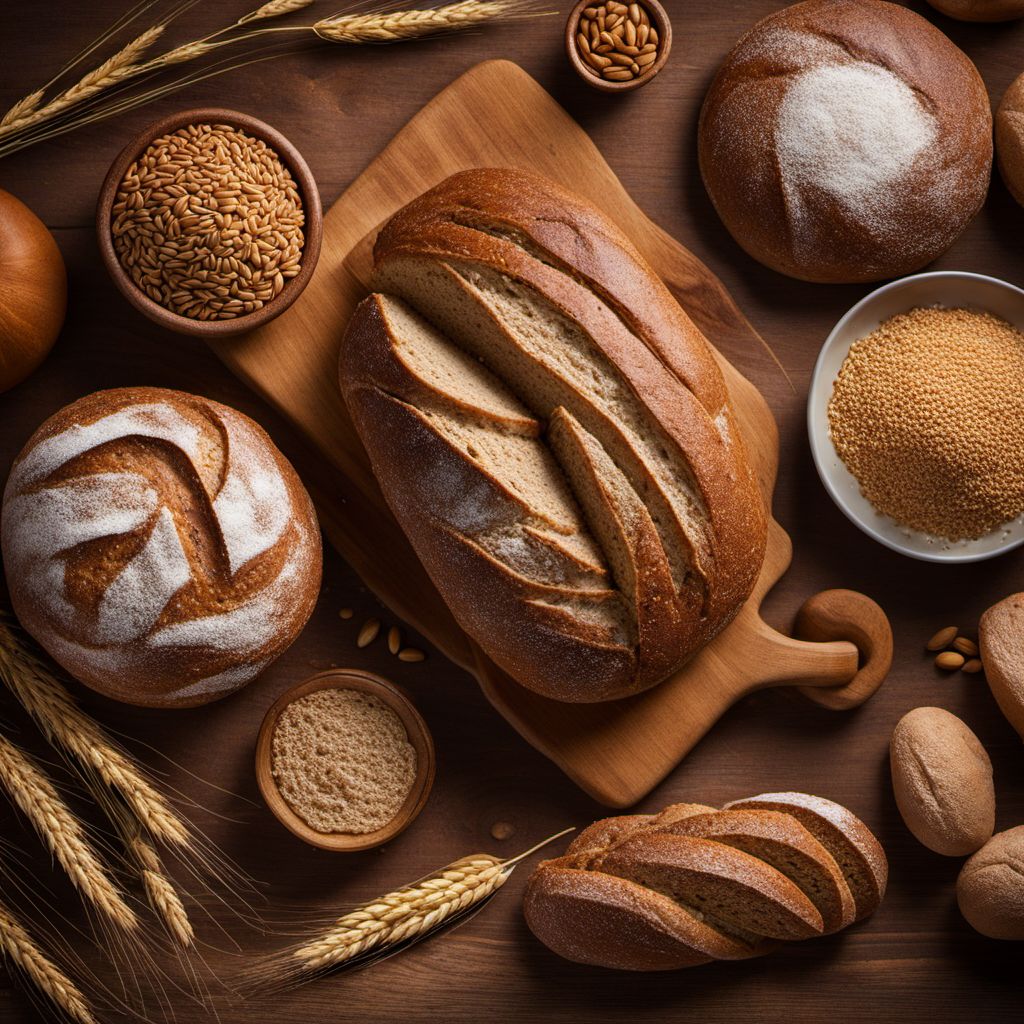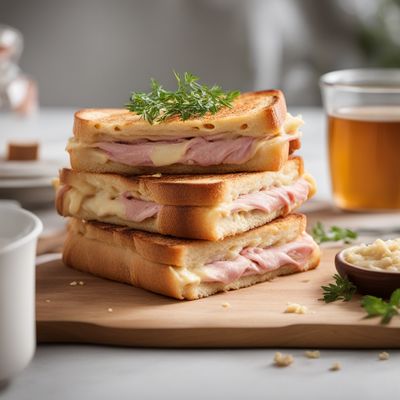
Ingredient
Mixed wheat and rye bread and rolls
Harmonious Blend of Wheat and Rye
Mixed wheat and rye bread and rolls are made by combining wheat and rye flour, resulting in a bread or roll with a dense yet tender crumb. The combination of these two grains creates a harmonious balance of flavors, with the nuttiness of rye complementing the mild sweetness of wheat. The bread or rolls have a slightly chewy texture and a rustic appearance, making them a versatile choice for sandwiches, toast, or as an accompaniment to soups and stews.
Origins and history
The tradition of combining wheat and rye in bread-making can be traced back to ancient civilizations, particularly in Europe. This combination became popular due to the availability of both grains in the region and the desire to create bread with enhanced flavor and nutritional value. Mixed wheat and rye bread and rolls have become staples in many European cuisines, such as German, Scandinavian, and Eastern European. They are often associated with hearty, traditional dishes and are deeply rooted in the culinary traditions of these regions.
Nutritional information
Mixed wheat and rye bread and rolls provide a good source of dietary fiber, essential minerals like iron and magnesium, and B vitamins. They are relatively low in fat and calories compared to other bread varieties.
Allergens
May contain gluten from wheat and rye, which can trigger allergic reactions in individuals with gluten sensitivities or celiac disease.
How to select
When selecting mixed wheat and rye bread and rolls, look for loaves or rolls that have a golden-brown crust and a firm, springy texture. Avoid bread or rolls that appear overly dense or have a stale smell. Freshly baked options from local bakeries or artisanal bread shops are often the best choice for superior quality and taste.
Storage recommendations
To maintain the freshness and quality of mixed wheat and rye bread and rolls, store them in a cool, dry place, preferably in a bread box or a paper bag. Avoid storing them in plastic bags, as this can cause moisture buildup and lead to mold growth. If the bread or rolls are not consumed within a few days, they can be frozen in airtight bags or containers for longer-term storage.
How to produce
Mixed wheat and rye bread and rolls can be produced by combining wheat flour and rye flour in the appropriate ratio, along with yeast, water, salt, and sometimes additional ingredients like sourdough starter or seeds. The dough is typically kneaded, allowed to rise, shaped into loaves or rolls, and then baked until golden brown and fully cooked.
Preparation tips
Mixed wheat and rye bread and rolls can be enjoyed in various ways. They are perfect for making sandwiches, such as pastrami or turkey, as the combination of wheat and rye adds depth of flavor to the fillings. They can also be toasted and served with butter or jam for a simple yet satisfying breakfast. Additionally, mixed wheat and rye bread and rolls are excellent for dunking into hearty soups or stews, as their dense texture holds up well.
Culinary uses
Mixed wheat and rye bread and rolls are commonly used in European cuisines, particularly in Germany, Scandinavia, and Eastern European countries. They are a staple in traditional dishes like open-faced sandwiches, sausages, and hearty stews.
Availability
Germany, Scandinavia, Eastern European countries
More ingredients from this category
Recipes using Mixed wheat and rye bread and rolls

Lithuanian Sour Rye Soup
Zesty Delight: Lithuanian Sour Rye Soup

Silesian-style Croque-monsieur
Silesian Delight: A Twist on the Classic Croque-monsieur

Faroese-Style Lýður Burger
Oceanic Delight: Faroese-Style Lýður Burger

Mordovian Woodcock Delight
Savory Mordovian Delight: A Twist on the Classic Woodcock

Pomeranian Eggy Bread
Golden Delight: Pomeranian Eggy Bread

Chifa-inspired Crispy Roggebrood Fries
Chifa Fusion: Crispy Roggebrood Fries with a Peruvian Twist

Central Asian Patty Melt
Savory Fusion: Central Asian Patty Melt with a Spicy Twist

